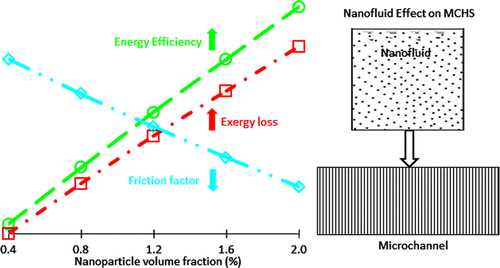Toward a new way to keep electronics from overheating

Computer technology has transformed the way we live, but as consumers expect ever more from their devices at faster speeds, personal computers as well as larger electronic systems can overheat. This can cause them to slow down, or worse, completely shut down. Now researchers are reporting in the ACS journal Industrial & Engineering Chemistry Research that liquids containing nanoparticles could help devices stay cool and keep them running.
Rahman Saidur and colleagues point out that consumers demand a lot out of their gadgets. But that puts a huge strain on the tiny parts that whir away inside desktops and mainframe computers, which do the major data crunching for us. The result is overheating. Recent research has shown that substances called nanofluids have the potential to help keep electronics cool. They are made of metallic nanoparticles that have been added to a liquid, such as water. But there are many different kinds, and past research on their coolant abilities has been limited. To help sort through them, Saidur's team set out to determine which ones might work best.
Using something called a microchannel heat sink to simulate the warm environment of working electronic systems, they analyzed three nanofluids for the traits that are important in an effective coolant. These include how well they transfer heat, how much energy they lose, the friction they cause and their pumping power. All three performed better than water as coolants with the nanofluid mixture of copper oxide and water topping them all.
The authors acknowledge funding from the Ministry of Education Malaysia.
More information: Energy, Exergy, and Friction Factor Analysis of Nanofluid as a Coolant for Electronics, Ind. Eng. Chem. Res., 2014, 53 (25), pp 10512–10518. DOI: 10.1021/ie501242b
Abstract
Power dissipation, chip power consumption, and heat flux in electronic devices have been steadily increasing over the past decade, creating a need for improved methods of cooling them. Nanofluids can be used as coolant for these electronics to improve their thermal performance. This paper presents an analysis of the energy, exergy, and frictional efficiencies of different nanofluids that are used to cool electronics. This was done by creating an analytical model in which different nanofluids flowed (at 0.5 m/s) through a rectangular-shaped microchannel heat sink (with a constant heat flux). These different nanofluids consisted of water as a base fluid, with 0.4 to 2.0 vol % of copper oxide (CuO), aluminum oxide (Al2O3), and titanium dioxide (TiO2) nanoparticles. The results generally showed that thermal resistance decreases as the volume fraction of nanoparticles is increased. The CuO-water nanofluid was found to be the best coolant in terms of both minimizing thermal resistance and maximizing the pressure reduction. The energy efficiency of the heat sink increases as the volume fraction of nanoparticles increases. A maximum energy efficiency of 98.9% was obtained using the CuO-water nanofluid (at 2.0 vol %). The Al2O3-water and TiO2-water nanofluids (also at 2.0 vol %) produced a maximum energy efficiency of 77.5% and 68.4%, respectively. The lowest exergy losses were: 19.2, 20.9, and 25.1 W for TiO2-water, Al2O3-water, and CuO-water nanofluids (all at 0.4 vol %), respectively. The dimensionless friction factor was reduced as the nanoparticle volume concentration increased. Also, the pumping power increased (to a high of 0.0173 W) as the mass flow rate increased.
Journal information: Industrial & Engineering Chemistry Research
Provided by American Chemical Society


















